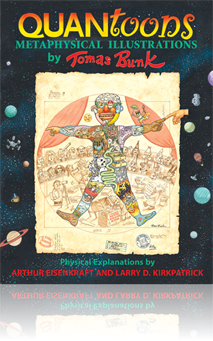All Resources
Book Chapter
Edwin Hubble showed that most stars (and galaxies) are receding from Earth. Because of the expansion, the frequencies of the spectral lines from the stars are shifted to lower values—that is, the light is redshifted. However, this is not the only ...
Book Chapter
When we think of forces, we usually imagine a push or a pull. Such a push or pull is assumed to be in the direction of the line connecting the pusher and the object pushed. Not so with the Lorentz force. A magnetic field acting on a moving charge pu...
Book Chapter
Nature has exhibited the effects of a variable index of refraction for a very long time. The index of refraction of air varies with its density. Therefore, the index of refraction of the Earth’s atmosphere decreases with altitude, and light rays be...
Book Chapter
Hos fast can you throw a baseball? How fast is a speeding bullet? Restricted to simple tools in the laboratory, this chapter explains how both measurements can be completed with a clever approach and some elementary physics. It then presents a challe...
Book Chapter
Every school-age kid has heard the prediction “What goes up must come down.” Many kids challenge it with a question relating to helium balloons. Some inquisitive and persistent kids have wondered what would happen if that object thrown up was g...
Book Chapter
Watching the Olympic Games is a reminder of the versatility of physics. The equations for projectile motion can be used to analyze many different track and field events. The athletes are not required to understand all of the physics, but coaches stud...
Book Chapter
All of the scenarios presented in this chapter have similar solutions. The trajectory of any object can be analyzed (without air resistance) by recognizing that the horizontal and vertical motions are independent of one another. The horizontal motion...
Book Chapter
Light plays such a crucial role in our lives that it’s very hard to imagine a universe without light. But what is light? How do we describe its behavior? We have two basic models that we can use to describe light—particle behavior and light beh...
Book Chapter
Can you keep a secret? Is it possible to send a signal out so that one person will receive the signal but another will not? The scenario presented in this chapter is a young radio amateur who maintains a link with two friends living in two towns. Two...
Book Chapter
Have you ever wanted to go to Mars? Sending humans to Mars will require a lot of preparation but the work has already begun. If you were too young to have watched the efforts to send the first humans to the Moon, you may be able to participate in th...
Book Chapter
Everyone loves colors—the colors of spring and summer, the colors of butterfly wings and rainbows, the colors of soap bubbles, and the colors from a CD. How are these the same? How are they different? Should we look to the same cause for what appea...
Book Chapter
What distinguishes the world’s great chefs from the millions of adequate cooks is an understanding of the concepts of cooking. We strive for a similar appreciation of physics concepts in our students. Most of the time the problems in physics textbo...
Book Chapter
A low rumble through the Earth convulses a highway like a fish gasping for air. A child in a distant playground moves gracefully propelling the swing to new heights. A crystal glass shatters with the precision of an operatic singer's voice. The Ear...
Book Chapter
Why do elephants have such big ears? And why do they have such thick legs? In other words, why do elephants have different shapes than horses? This chapter focuses on these questions and more explaining how they can be answered using the laws of scal...
Book Chapter
An interesting experiment to perform involves a helium balloon tied to the seat of a car. As the car accelerates forward, the helium balloon will lean forward. There are two distinct ways of explaining why. The first involves the inertia of the air....



